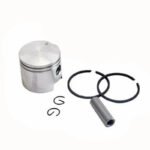
Preventative maintenance is the cornerstone of efficient agricultural operations. For plantation managers, tea estate owners, and rubber farmers, it’s a proactive approach to avoid costly repairs, extend machinery lifespan, and maximize productivity. By dedicating time to regular upkeep, you can save time, money, and ensure your machinery operates seamlessly during peak seasons. This guide will walk you through the importance, benefits, and best practices for preventative maintenance in agricultural settings
What is Preventative Maintenance?
Preventative maintenance refers to routine inspections, servicing, and part replacements carried out to prevent equipment failures. Unlike reactive repairs, which address breakdowns after they occur, preventative maintenance keeps your machinery in top condition to avoid unexpected downtime. For agricultural machinery, this includes tasks like checking fluid levels, lubricating moving parts, and replacing worn-out components before they fail.
Key Benefits of Preventative Maintenance
1. Cost Savings
- Reduces Unexpected Repairs: Catching issues early minimizes the likelihood of expensive breakdowns.
- Prolongs Equipment Lifespan: Regular care ensures your investment lasts longer.
- Minimizes Downtime: With fewer breakdowns, your operations stay on schedule.
2. Enhanced Efficiency
- Optimal Performance: Regular lubrication and cleaning keep machinery running smoothly.
- Improved Productivity: Efficient machines complete tasks faster and with less fuel consumption.
- Fewer Interruptions: Preventative maintenance ensures fieldwork isn’t delayed during critical periods.
3. Improved Safety
- Reduced Risks: Properly maintained machinery lowers the chance of accidents.
- Safe Work Environment: Operators can trust that equipment will function as intended.
Key Areas to Focus on for Preventative Maintenance
1. Routine Inspections
- Inspect machinery daily for visible wear or damage.
- Weekly checks for tire pressure, belts, and hoses.
- Monthly in-depth assessments of critical components like engines and transmissions.
2. Lubrication and Fluids
- Use high-quality lubricants to reduce friction and prevent overheating.
- Regularly check and top up engine oil, coolant, and hydraulic fluids.
- Replace fluids according to manufacturer recommendations.
3. Parts Replacement
- Replace air filters, spark plugs, and brake pads as needed.
- Monitor wear-and-tear components like belts and bearings closely.
- Use genuine parts from trusted suppliers like Lakparts.com for reliability.
4. Calibration and Adjustments
- Ensure precision in machinery settings for tasks like pruning and harvesting.
- Adjust equipment to suit field conditions and specific plantation requirements.
Steps to Create a Preventative Maintenance Plan
1. Assess Machinery Inventory
- List all equipment used in your operations.
- Note maintenance requirements based on manufacturer guidelines.
2. Schedule Maintenance Tasks
- Set daily, weekly, and monthly routines for inspections and servicing.
- Align maintenance schedules with seasonal workloads.
3. Train Your Team
- Teach workers how to identify early signs of wear or malfunction.
- Encourage prompt reporting of potential issues.
4. Record Keeping
- Maintain logs for each machine detailing completed maintenance tasks.
- Use software or simple spreadsheets to track trends and predict future needs.
Common Mistakes to Avoid
1. Skipping Small Tasks
- Neglecting minor maintenance can lead to significant issues over time.
2. Ignoring Warning Signs
- Address unusual sounds, leaks, or performance dips immediately.
3. Using Low-Quality Parts or Lubricants
- Inferior products can compromise machinery performance. Stick to trusted brands like those available at Lakparts.com.
4. Failing to Involve Operators
- Operators often notice subtle changes in machinery behavior. Their input is invaluable.
Tools and Resources for Effective Maintenance
1. Diagnostic Devices
- Modern tools can identify potential issues before they escalate.
2. Maintenance Management Software
- Digital tools help track schedules, tasks, and history.
3. Reliable Suppliers
- Access to quality lubricants, parts, and tools is crucial. Lakparts.com provides a wide range of options tailored to agricultural needs.
4. Expert Guidance
- Seek advice from professionals or platforms like Vagaa.lk for plantation management insights.
Conclusion
Preventative maintenance is a game-changer for agricultural operations. It saves time, reduces costs, and ensures the efficiency of your machinery. By focusing on regular inspections, proper lubrication, timely parts replacement, and systematic planning, plantation managers and farmers can avoid the stress of unexpected breakdowns. Start building your preventative maintenance plan today and experience the benefits firsthand.
Visit Lakparts.com for premium maintenance supplies and expert advice tailored to your plantation needs.




